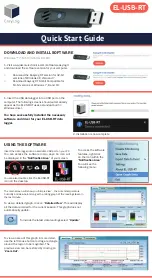
voltage
measurement
device,
such
as
the
datalogger.
These
connections
form
the
reference
junction.
If
the
two
junctions
(measurement
and
reference)
are
at
different
temperatures,
a
voltage
proportional
to
the
difference
is
induced
in
the
wires.
This
phenomenon
is
known
as
the
Seebeck
effect.
Measurement
of
the
voltage
between
the
positive
and
negative
terminals
of
the
voltage-
measurement
device
provides
a
direct
measure
of
the
temperature
difference
between
the
measurement
and
reference
junctions.
A
third
metal
(for
example,
solder
or
datalogger
terminals)
between
the
two
dissimilar-metal
wires
form
parasitic-thermocouple
junctions,
the
effects
of
which
cancel
if
the
two
wires
are
at
the
same
temperature.
Consequently,
the
two
wires
at
the
reference
junction
are
placed
in
close
proximity
so
they
remain
at
the
same
temperature.
Knowledge
of
the
reference
junction
temperature
provides
the
determination
of
a
reference
junction
compensation
voltage,
corresponding
to
the
temperature
difference
between
the
reference
junction
and
0°C.
This
compensation
voltage,
combined
with
the
measured
thermocouple
voltage,
can
be
used
to
compute
the
absolute
temperature
of
the
thermocouple
junction.
TCDiff()
and
TCSE()
thermocouple
instructions
determine
thermocouple
temperatures
using
the
following
sequence.
First,
the
temperature
(°C)
of
the
reference
junction
is
determined.
Next,
a
reference
junction
compensation
voltage
is
computed
based
on
the
temperature
difference
between
the
reference
junction
and
0°C.
If
the
reference
junction
is
the
datalogger
analog
ue
-input
terminals,
the
temperature
is
conveniently
measured
with
the
PanelTemp()
instruction.
The
actual
thermocouple
voltage
is
measured
and
combined
with
the
reference
junction
compensation
voltage.
It
is
then
used
to
determine
the
thermocouple-junction
temperature
based
on
a
polynomial
approximation
of
NIST
thermocouple
calibrations.
6.5
Period-averaging
measurements
Use
PeriodAvg()
to
measure
the
period
(in
microseconds)
or
the
frequency
(in
Hz)
of
a
signal
on
a
single-ended
channel.
For
these
measurements,
the
datalogger
uses
a
high-frequency
digital
clock
to
measure
time
differences
between
signal
transitions,
whereas
pulse-count
measurements
simply
accumulate
the
number
of
counts.
As
a
result,
period-average
measurements
offer
much
better
frequency
resolution
per
measurement
interval
than
pulse-
count
measurements.
See
also
71).
SE
terminals
on
the
datalogger
are
configurable
for
measuring
the
period
of
a
signal.
The
measurement
is
performed
as
follows:
low-level
signals
are
amplified
prior
to
a
voltage
comparator.
The
internal
voltage
comparator
is
referenced
to
the
programmed
threshold.
The
threshold
parameter
allows
referencing
the
internal
voltage
comparator
to
voltages
other
than
0
V.
For
example,
a
threshold
of
2500
mV
allows
a
0
to
5
Vdc
digital
signal
to
be
sensed
by
the
6. Measurements
70
Summary of Contents for CR1000X
Page 1: ...Revision 02 21 2019 Copyright 2000 2019 Campbell Scientific ...
Page 2: ......
Page 4: ......
Page 6: ......
Page 8: ......
Page 16: ...Appendix A Glossary 176 Appendix B Index 214 Table of Contents viii ...
Page 192: ......
















































